| Description: |
Lutein and Zeaxanthin in neural tissue may have biological effects that include antioxidation, anti-inflammation, and structural actions. Lutein and Zeaxanthin may be protective against eye disease because they absorb damaging blue light that enters the eye.
|
| Targets: |
Immunology & Inflammation related |
| In vitro: |
| Mol Vis . 2019 Sep 5;25:479-488. eCollection 2019. | | Evaluation of antioxidant treatments for the modulation of macrophage function in the context of retinal degeneration[Pubmed: 31588172] | | Abstract
Purpose: Oxidative stress and macrophages have been implicated in the pathogenesis of atrophic and neovascular age-related macular degeneration (aAMD and nvAMD). It is unclear whether oxidative injury mediates macrophage involvement in AMD. We aimed to investigate the effect of antioxidant treatments on human monocyte-derived macrophages (hMDMs) from patients with AMD in models for the disease.
Methods: Four antioxidant treatments were evaluated (G1: lutein + Zeaxanthin, G2: lutein + Zeaxanthin and zinc, G3: lutein + Zeaxanthin, zinc, Lyc-O-Mato, and carnosic acid, G4: lutein + Zeaxanthin, carnosic acid, and beta-carotene, G5: olive oil as vehicle control). The compounds were added to the culture medium of M1 (interferon-gamma [IFN-Ɣ] and lipopolysaccharide [LPS]) and M2a (interleukin-13 [IL-13] and IL-4) hMDMs from patients with AMD (n=7 and n=8, respectively). Mouse choroidal tissue was cultured with supernatants from treated M1/M2a hMDMs, to evaluate the effect of treatments on the angiogenic properties of macrophages with choroidal sprouting assay (CSA). Mouse retinal explants were cultured with treated hMDMs for 18 h, and evaluated for photoreceptor apoptosis using terminal deoxynucleotidyl transferase dUTP nick end labeling (TUNEL) labeling. Adult BALB/c mice (n=8) were exposed to 8,000 lux bright light for 3 h, and treated orally with antioxidant supplements for 7 days that preceded light injury and following it. Oxidative stress was assessed using an anti-4 hydroxynonenal (4-HNE) antibody. Retinal function and the thickness of the outer nuclear layer were evaluated with electroretinography (ERG) and histological analysis, respectively.
Results: The G3 treatment reduced M2a hMDMs-associated sprouting in the CSA compared to the untreated group (n=7, -1.52-fold, p=0.05). Conversely, the G2 treatment was associated with an increased neurotoxic effect of M2a hMDMs in the retinal explant assay compared to the control group (n=7, 1.37-fold, p=0.047), as well as compared to the G3 treatment group (1.46-fold, p=0.01). The G4 treatment was also associated with increased cytotoxicity compared to the control group (1.48-fold, p=0.004), and compared to the G3 treatment group (1.58-fold, p=0.001). In the in vivo light damage model, mice (n=8) supplemented with G2, G3, and G4 had decreased levels of oxidative injury assessed using 4-HNE labeling (-2.32-fold, -2.17-fold, and -2.18-fold, respectively, p<0.05 for all comparisons). None of the treatments were associated with reduced photoreceptor cell loss, as shown with histology and ERG.
Conclusions: Antioxidant treatment modulates M2a hMDMs at the functional level. In particular, we found that the G3 combination has a beneficial effect on M2a macrophages in reducing their angiogenic and neurotoxic capacity ex vivo. In addition, antioxidant treatments considerably reduced the oxidative stress level in light-damaged retinas. Further research is required to assess whether such therapies may curb macrophage-driven photoreceptor loss and neovascularization in AMD. |
|
| In vivo: |
| Arch Biochem Biophys. 2015 Apr 15;572:54-7. | | A randomized placebo-controlled study on the effects of lutein and zeaxanthin on visual processing speed in young healthy subjects.[Pubmed: 25483230] | Speed of processing is a particularly important characteristic of the visual system. Often a behavioral reaction to a visual stimulus must be faster than the conscious perception of that stimulus, as is the case with many sports (e.g., baseball). Visual psychophysics provides a relatively simple and precise means of measuring visual processing speed called the temporal contrast sensitivity function (tCSF). Past study has shown that macular pigment (a collection of xanthophylls, lutein (L), meso-Zeaxanthin (MZ) and Zeaxanthin (Z), found in the retina) optical density (MPOD) is positively correlated with the tCSF.
METHODS AND RESULTS:
In this study, we found similar correlations when testing 102 young healthy subjects. As a follow-up, we randomized 69 subjects to receive a placebo (n=15) or one of two L and Z supplements (n=54). MPOD and tCSF were measured psychophysically at baseline and 4months. Neither MPOD nor tCSF changed for the placebo condition, but both improved significantly as a result of supplementation.
CONCLUSIONS:
These results show that an intervention with L and Z can increase processing speed even in young healthy subjects. | | Food Chem Toxicol. 2014 Oct;72:30-9. | | Safety evaluation of zeaxanthin concentrate (OmniXan™): acute, subchronic toxicity and mutagenicity studies.[Pubmed: 24964014 ] | The available evidence suggests a beneficial effect of Zeaxanthin against the progression of age-related macular degeneration (AMD). The objective of the present study was to investigate potential adverse effects of OmniXan™, a RR-Zeaxanthin (65%) enriched product obtained from paprika (Capsicum annum fruits) in subchronic toxicity and mutagenicity studies.
METHODS AND RESULTS:
The oral LD50 of OmniXan(TM) in rats was greater than 2000 mg/kgbody weight (bw)/day. For the subchronic toxicity study, Wistar rats (10/sex/group) were gavaged daily with Zeaxanthin concentrate at doses of 0, 4, 40 and 400 mg/kg bw/day for 90-days. No treatment related clinical signs and mortalities observed. Similarly, no treatment related toxicologically significant changes in body weight, feed consumption; ophthalmoscopic examination, neurological examination, hematology, urine analysis and organ weights were observed. Statistically significant changes observed in some clinical chemistry parameters were considered toxicologically and biologically insignificant and nonadverse. Macroscopic and microscopic examinations did not reveal treatment-related abnormalities.
CONCLUSIONS:
The results of mutagenicity testing using Salmonella typhimurium did not reveal any genotoxicity. The no observed-adverse-effect level (NOAEL) for Zeaxanthin concentrate (OmniXan(TM)) was determined as 400 mg/kg bw/day, the highest dose tested. The findings of this subchronic toxicity and mutagenicity studies support safety of Zeaxanthin concentrate. | | Nutr Rev. 2014 Sep;72(9):605-12. | | Role of lutein and zeaxanthin in visual and cognitive function throughout the lifespan.[Pubmed: 25109868] | The relationship between lutein and Zeaxanthin and visual and cognitive health throughout the lifespan is compelling. There is a variety of evidence to support a role for lutein and Zeaxanthin in vision. Lutein's role in cognition has only recently been considered. Lutein and its isomer, Zeaxanthin, are taken up selectively into eye tissue.
METHODS AND RESULTS:
Lutein is the predominant carotenoid in human brain tissue. Lutein and Zeaxanthin in neural tissue may have biological effects that include antioxidation, anti-inflammation, and structural actions. In addition, lutein and Zeaxanthin may be protective against eye disease because they absorb damaging blue light that enters the eye.
In pediatric brains, the relative contribution of lutein to the total carotenoids is twice that found in adults, accounting for more than half the concentration of total carotenoids. The greater proportion of lutein in the pediatric brain suggests a need for lutein during neural development as well. In adults, higher lutein status is related to better cognitive performance, and lutein supplementation improves cognition.
CONCLUSIONS:
The evidence to date warrants further investigation into the role of lutein and Zeaxanthin in visual and cognitive health throughout the lifespan. |
|




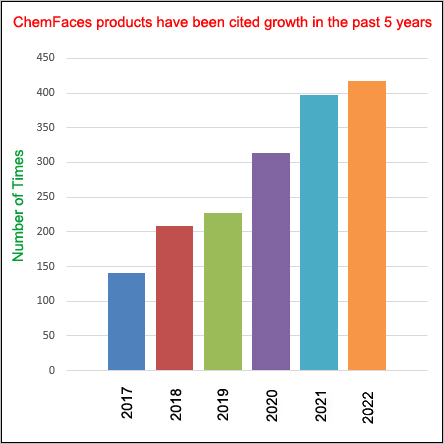
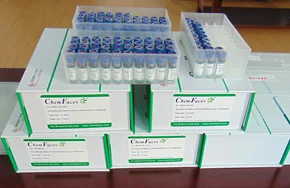
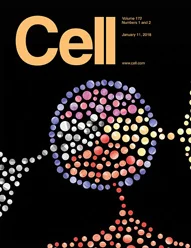 Cell. 2018 Jan 11;172(1-2):249-261.e12. doi: 10.1016/j.cell.2017.12.019.IF=36.216(2019)
Cell. 2018 Jan 11;172(1-2):249-261.e12. doi: 10.1016/j.cell.2017.12.019.IF=36.216(2019)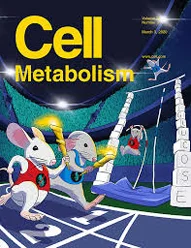 Cell Metab. 2020 Mar 3;31(3):534-548.e5. doi: 10.1016/j.cmet.2020.01.002.IF=22.415(2019)
Cell Metab. 2020 Mar 3;31(3):534-548.e5. doi: 10.1016/j.cmet.2020.01.002.IF=22.415(2019)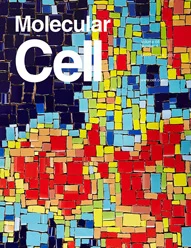 Mol Cell. 2017 Nov 16;68(4):673-685.e6. doi: 10.1016/j.molcel.2017.10.022.IF=14.548(2019)
Mol Cell. 2017 Nov 16;68(4):673-685.e6. doi: 10.1016/j.molcel.2017.10.022.IF=14.548(2019)